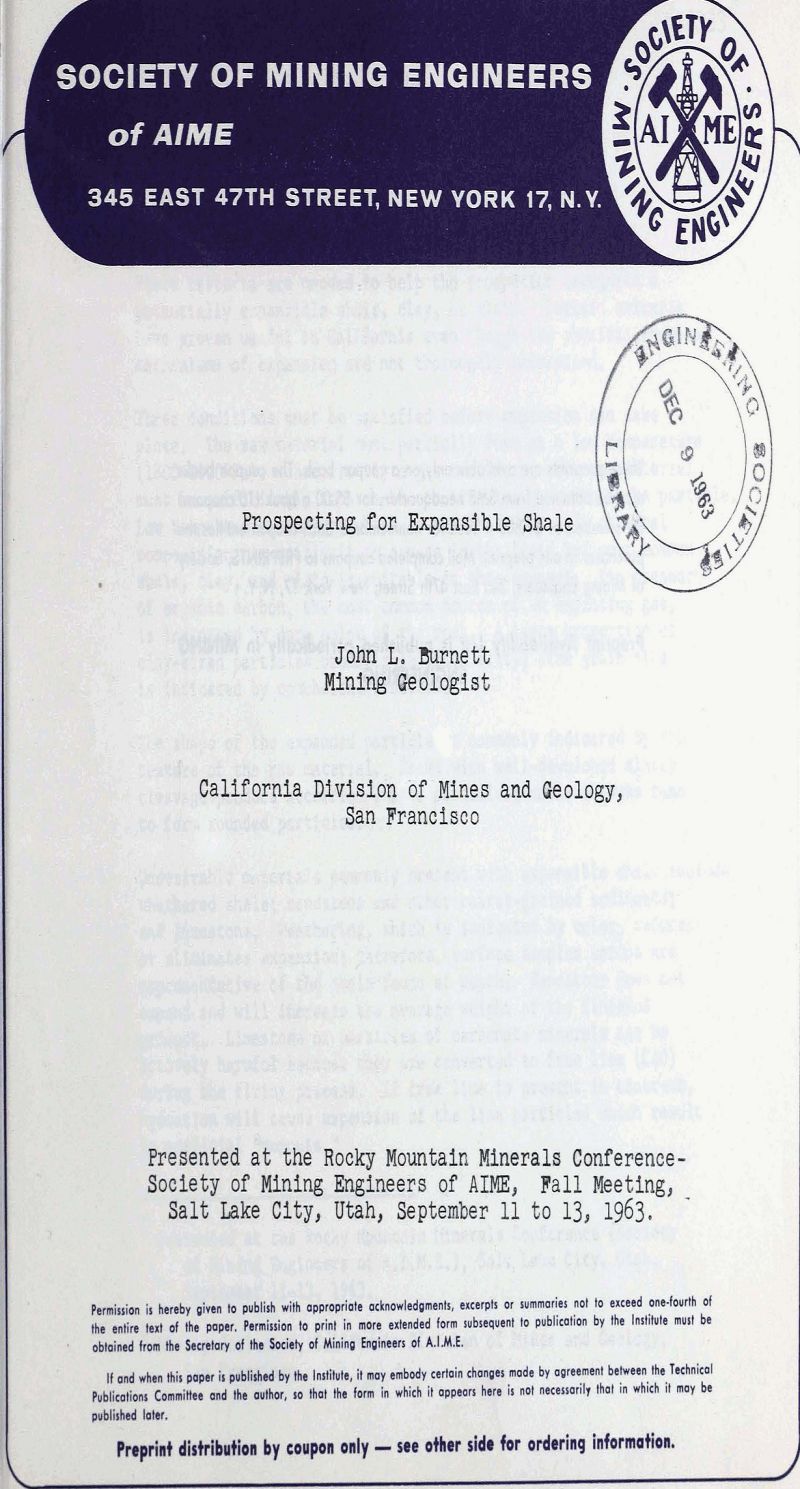Field criteria are needed to help the prospector recognize a potentially expansible shale, clay, or slate. Certain criteria have proven useful in California even though the physical-chemical mechanisms of expansion are not. thoroughly understood.
Three conditions must be satisfied before expansion can take place. The raw material must partially fuse at a low temperature (1800-2000°F.). Concurrently a gas must form. The raw material must be sufficiently impermeable to trap the gas within the particle. Low temperature melting, which is controlled by bulk chemical composition, is difficult to assess in the field but most common shale, clay, and slate is suitable in this respect. The presence of organic carbon, the most common source of an expanding gas, is indicated by dark color of the rock. A large proportion of clay-sized particles promotes impermeability; fine grain-size is indicated by conchoidal fracture.
Expanded shale is a commodity which mist be produced in high volume at a low cost in order for it to be competitive with normal sand and gravel aggregates. The initial cost of establishing an expanding plant is high, usually in the multimillion dollar bracket.
A most important early step is to learn where the major sales area will be and to determine the volume of sales that can reasonably be expected. This information can be balanced against the probable cost of building a processing plant and developing a marketable product.
Once the region of major interest has been determined, the next step is to appraise the sedimentary materials within this area. In order to be considered, a deposit should be large and uniform so that inexpensive mining methods can be used, and it should be readily accessible so that transportation to the market will be inexpensive. Processing the shale requires rather large quantities of fuel, so proximity to a fuel source is also important.
The expansion of shale is controlled by a complex and inadequately understood combination of factors which depend upon the physical and chemical properties of the shale. The shale particles expand when they reach the temperature where melting has just begun.
The color differences between samples which expand well, poorly, or not at all are subtle and difficult to describe, but these differences can be detected when one gains experience in recognizing them.
Grain size is another factor of importance, because expansibility is greatest in rocks which are composed of clay-sized particles. A rock composed of silt-size particles normally will not expand, although expansion will take place if the rock contains a mixture of particles in the silt and clay sizes.
Sandstone, siltstone, and other coarse-grained sediments are undesirable because they do not expand and therefore they increase the average weight of the finished product.

